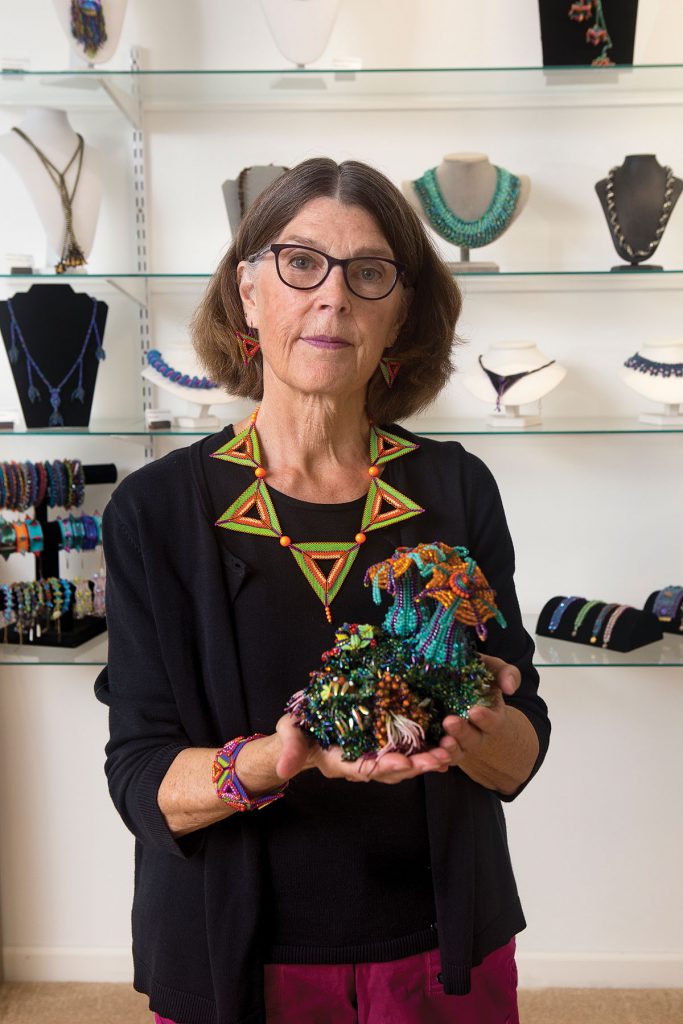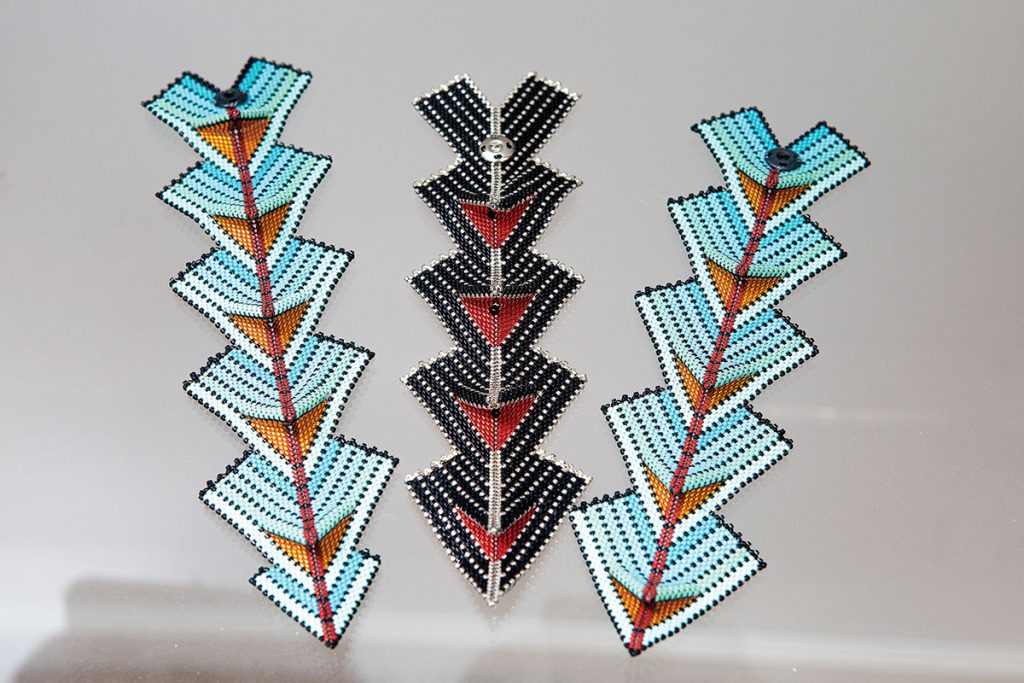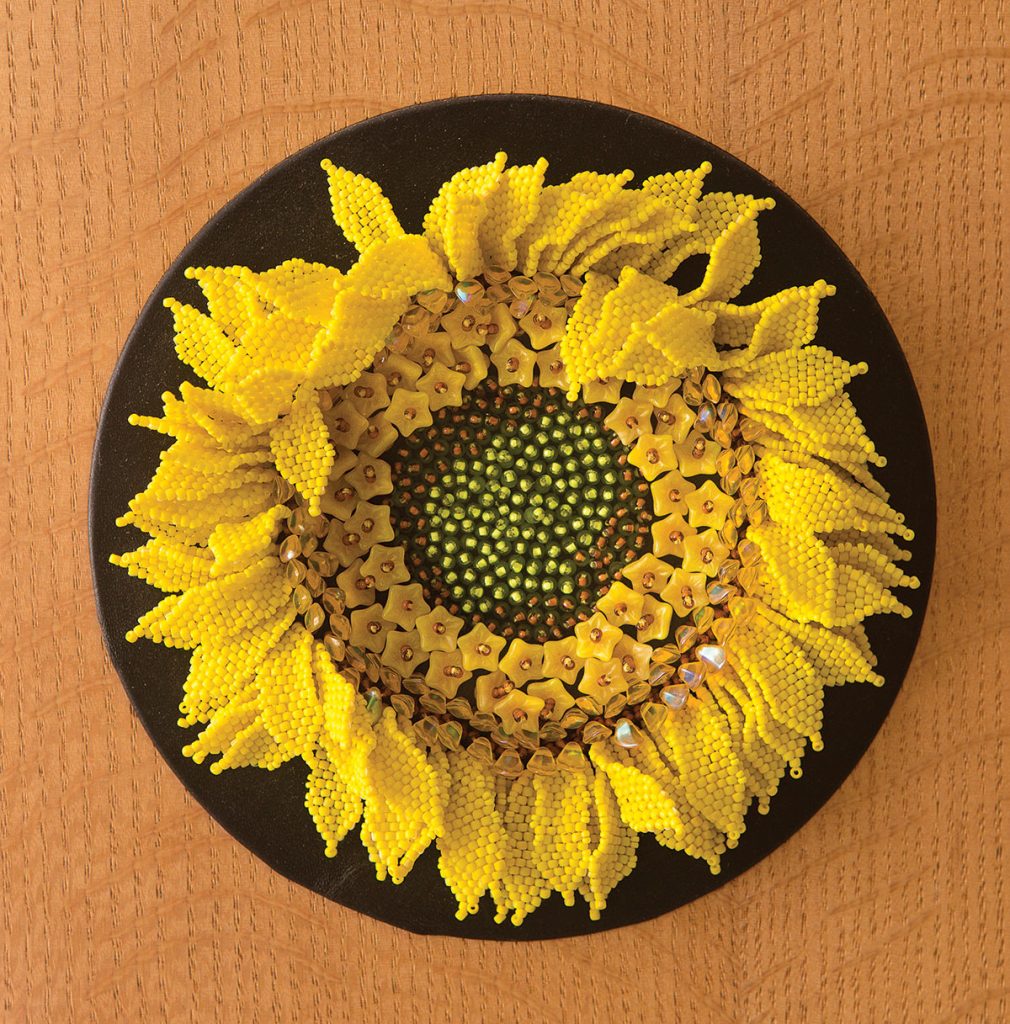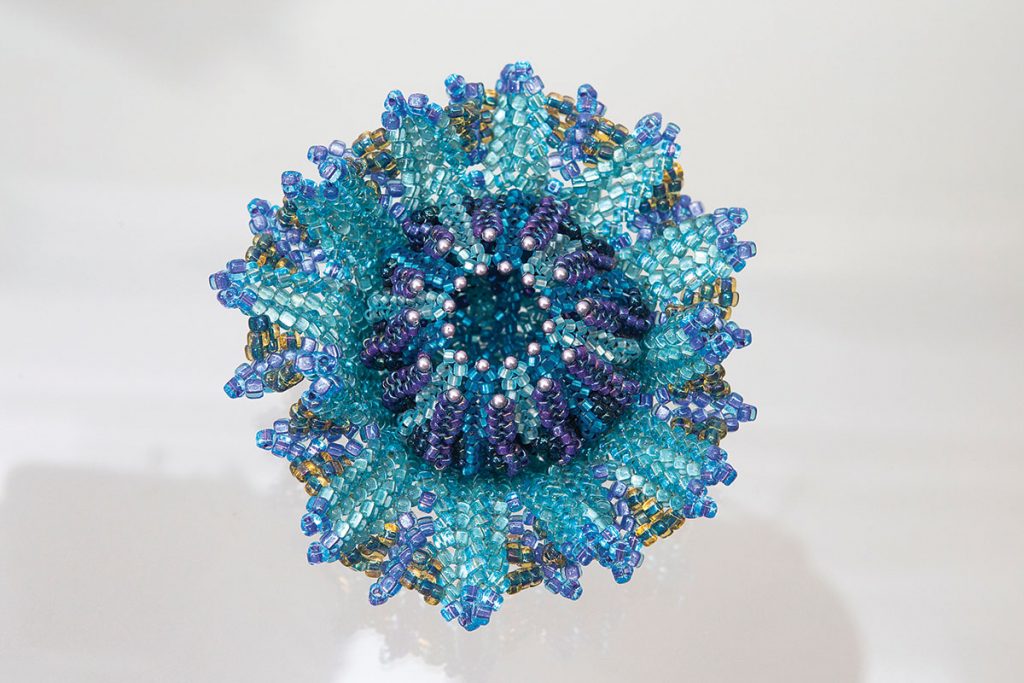
Portrait by Matt Rose
Wendy Ellsworth has been beading since 1970, when, as a reaction to the Vietnam War, she headed into the highest peaks of the Rockies and began making mandalas. Since then, she considers her artistic life to have been one flow, spiraling ever outward, just like those early pieces
“What I was doing was centering myself . . . and building myself out from that center,” she says. For the last two years, she and her woodworker husband, David Ellsworth, have shared a home studio in Weaverville.

In the early ’80s, after more than a decade of working with beads, Ellsworth took a walk in the woods. “And there was this tree branch on the ground,” she says. “I thought, ‘That’s an interesting-looking branch.’ And I picked it up and it really, literally spoke to me and said, ‘Bead me.’ I thought that was hysterically funny. And so I brought it into my studio.”

That was the beginning of a series of kinetic beaded figures — spare and contemporary but also whimsical — that dance, leap, and sometimes cower. To accomplish them, Ellsworth beaded directly onto the twigs and branches and mounted them upright onto platforms constructed by her husband. Some have wild hair; others sport skirts or stockings and garters.

The deceptively simple figures helped her navigate one of the most difficult periods of her life, even as the series segued into the creation of three-dimensional organic shapes. The curve of a beaded skirt led her to her next era — leaving the twig armatures behind and making freeform beaded vessels and containers.

Ellsworth crafted bejeweled tiny urns with sprays of scarlet beads reminiscent of pomegranate seeds on their lids. Over time, these, too, transformed, some into organic forms like cocoons or stalagmites, others into free-form meta shapes filled with other beads that exhibit a surprising weight and sound when handled. Still others developed frills and larger openings, mimicking sea coral and anemones.


These jewel-toned “sea forms,” as Ellsworth calls them, delight with their complexity, and can take a month each to complete. The artist sorts tiny Czech beads one by one and has learned just how much tension to apply to create shapes that will remind the viewer of undulating sea life. Yet, as with the stick figures, there’s a more serious driving force. “I still do my sea forms,” she says, as “a way for me to draw attention to the coral reefs . . . beginning to die out and bleach.”
When the path forked again, she began her latest adventure: crafting bold geometric jewelry and art pieces using laser-cut Japanese beads. Ellsworth — the author of numerous articles and a book about seed beading, and named “Designer of the Year” last year by national Beadwork Magazine — hearkens back to those original spiraling mandalas, considering a creative journey that was based in surrender and accomplished one bead at a time.
“It’s held my interest for 50 years. And I’m not done yet, that’s for sure.”
Wendy Ellsworth, Weaverville. To schedule studio visits, contact the artist via e-mail (wendy.ellsworth3@gmail.com). For more information, see ellsworthstudios.com/aboutwendy.
This is a lovely article! A lifetime of exquisite and original works of art and of the finest bead craft. Congratulations on the well-deserved award!